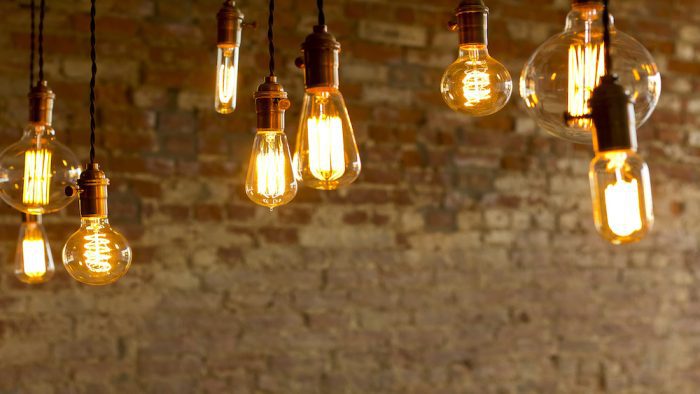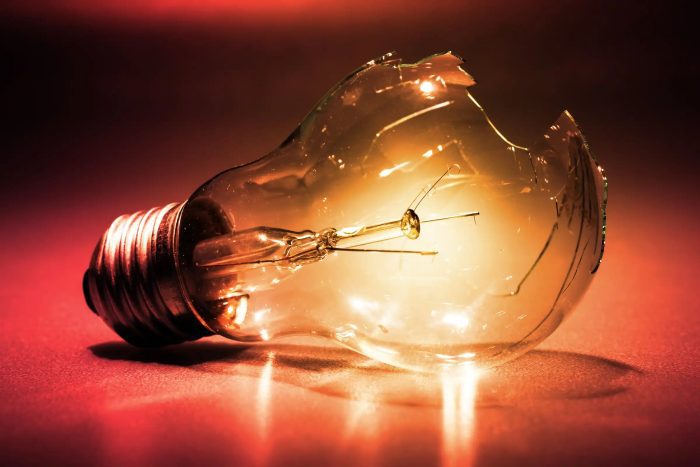With the new technological innovations and the founding and praising of LED lights, people started wondering why are incandescent light bulbs bad and how they impact your living. If this question bothered you too, you have clicked on the right article.
Here you will be able to read everything you possibly need to know regarding why incandescent bulbs are bad and what is a better alternative. So if this sounds like the information you were looking for, read this article until the end.

Why Are Incandescent Light Bulbs Bad?
Although incandescent light bulbs were the most used, loved, and go-to choice in the past, thanks to recent discoveries and research, scientists understood that these types of light bulbs might not be as good as people thought they were.
So naturally, as everyone started wondering why are incandescent light bulbs bad all of a sudden, we wanted to assemble this article and provide you with all the necessary facts you need to know regarding this type of light bulb.
Some factors that make these light bulbs bad include their fragility, poor-light quality, heating danger, and more.
In continuation, you will be able to read more about the most significant factors that make incandescent light bulbs bad for the Earth and every living being.
Environment
The first and foremost reason incandescent light bulbs are bad is their destructive environmental impact. More specifically, incandescent light bulbs require significantly more energy to work correctly.
Additionally, as electricity in most parts of the world is still majorly produced through the process of fossil fuels, the more electricity you spend, the higher the CO2 emissions. And the higher the CO2 emissions, the higher the destruction of nature and ecosystems.
If you think that your one incandescent light bulb can not have such a significant impact on the environment, try to multiply that with billions of households, offices, stores, etc., that use at least three to four incandescent light bulbs per home. This way, you can only try to picture the intensity and gravity of the CO2 emissions and, as a result, the irreversible destruction on our home planet.
So if you want to go green and save what little could be saved, try using lower energy-consuming light bulbs such as LEDs.
The fragility of the bulbs
The next disadvantage of utilizing incandescent light bulbs is the fragility of the bulb itself. As these lights are much more fragile than LED lights, they are naturally more prone to breaking or even fracturing in contact with cold objects. This also means that if you accidentally hit the incandescent light bulb, you will have glass pieces all over the room.
Also, it is even more dangerous if the incandescent light bulb breaks while in the fixture. Because of its sharp glass edges, removing the bulb must be done extremely carefully and with a lot of caution. One wrong move, and you have a glass cut on your hand.

A hazard for pets and children
As previously mentioned, because of the fragility of this light bulb’s materials, the incandescent light bulb also represents a hazard for pets and children. One minute of leaving them unsupervised and they might easily break the light bulb, harming and injuring themselves seriously.
In other words, if you have an exposed incandescent light bulb in your room, you must always fully pay attention to your pets or children because five seconds are enough for the accident waiting to happen.
Financial costs
The third reason incandescent light bulbs might be the worst lighting choice is their financial cost. To put it into perspective, although an incandescent light bulb might cost a little bit less than an LED light, you will still spend much more money on it than on LED lights.
The reason behind this is that maintaining incandescent light bulbs is quite pricey. Compared to LED bulbs that last twice to three times more than incandescent light bulbs, you might save about $150 annually by switching to fully LED.
Moreover, as one average family goes through twenty to thirty incandescent light bulbs in one year, this number can be cut almost in half by switching to more durable and energy-efficient light bulb choices.
High electricity bills
As mentioned earlier, because incandescent light bulbs require much more electricity and energy to work, consequently, your electricity bills might be much higher. Incandescent light bulbs are one of the largest energy consumers, so even though you might be saving energy to reduce costs, your electricity bill will remain the same.
To fix this issue and lower the electricity bill costs, you can switch to more energy-efficient light bulbs that do not require as much energy to work as incandescent light bulbs. After doing this for a few months, you will surely notice a decrease in your energy consumption, resulting in lower electricity bills and possibly saving much more money.
Poor light-quality options
Regarding shades and colors, incandescent light bulbs have significantly poorer choice options. Also, these light bulbs are ranked low on the color temperature scale because of their orange tone, which is highly unpleasant and gives an unnatural vibe to the entire place.
Another downside of incandescent light bulbs is their light quality is inferior and dull. If you put this type of bulb in a room where you need sharpness and quality lighting, you will end up with this half-dark unclear lighting that will only strain your eyes and nothing more.
Heating danger
Finally, the last most significant disadvantage and the reason why incandescent light bulbs are bad is the heating danger. More specifically, because these types of light bulbs emit extreme heat, they might easily burn you or overheat under warmer weather conditions and stop working.
Besides this, when the temperatures are higher, incandescent light bulbs add to the heat inside your home, making it even hotter than it is. So when you use your cooling system, you will need to leave it on much longer because the temperature in the room will significantly increase due to the heat from this light bulb; of course, this will also increase the electricity bill.
Conclusion
In this article, we have thoroughly explained why are incandescent light bulbs bad and why you should immediately replace them with more energy-efficient light bulb solutions. After doing so, you will see how your energy consumption should drastically decrease, and your money savings may drastically increase.
